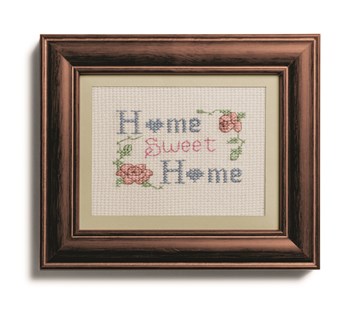
No, it’s not the Katy Perry song, “first you’re hot and then you’re cold,” but treating a bedbug infestation can be just as opposing and confusing as the romantic relationship in that popular song. Do I go with the pest control company bedbug treatment that cooks ‘em alive or the company that freezes them into popsicles?
First, always call a pest control professional to deal with a bedbug problem. Only a pest control professional has the specialized equipment for either the heat or freezing methods, the approved and licensed pesticides—and the expert knowledge of how to use them safely, and to locate and eliminate bedbugs.
Then the areas of bedbug infestation have to be determined. Beside a basic visual inspection of mattresses, bed frames, carpets, night stands, behind wall decorations, and other places where bedbugs are known to hide there are alternative means of detecting bedbug locations within an area—both include the method of “sniffing” them out. The most popular and proven effective method is using a certified bedbug dog, with an experienced handler. Dogs can sniff out a scent as faint as 500 parts per trillion and can detect a bedbug within a room in minutes, down to within a couple of inches. An electronic sniffing device has recently been developed to sense the presence of the CO2 signature emitted from bedbugs after a blood meal.
This product is indeed a revolutionary advancement, but its ability to locate bedbug eggs and those that have not fed recently is in question. Plus there is the question of the effective comparison of which method, dog versus machine is better. There is no question regarding the effectiveness of dogs to locate just about anything by their sense of smell. Not only have they been proven effective in the field finding drugs and explosives, but in scientific studies dogs were also able to detect someone with diabetes or with some forms of cancer; and unlike a machine’s setting, dogs have intelligence and can continually make evaluations and determinations resulting in an almost perfect 99 percent plus accuracy rate. Dogs are the current industry standard.
After locating the area of infestation, a physical removal of visible bedbugs from an infested area is required by both manual and deep vacuum means. Then comes the methods of treating the bedbug infestation, there are two: both include an application of a residual pesticide, then comes the choice—with heat or by freezing.
The use of a residual pesticide is a given. What pesticide, where it’s applied, and how much is applied is extremely important not only to effectively treat the area and affect bedbugs who may have some way escaped the other treatment or are introduced into an area after treatment.
Both Hot and Cold Methods Effective
Which brings us to the use of heat or cold to kill bedbugs; actually both are effective means for killing bedbugs. Like most insects, bedbugs have the capacity to develop resistance to pesticides, so the pest control industry continually develops alternate methods of eradicating them. Apparently the environment plays a big part in the biology of insects. Insects of all types are sensitive to extremes in temperature. Excessive heat or rapid freezing kills most insects, which is why pest control industry has moved to this greener, safer, and very effective approach to killing bedbugs.
Although both techniques are highly effective, each method has its optimal operating environment for maximum effectiveness.
Dry heat in the range of 120 to 140 degrees is severe enough to kill bedbugs when bedbugs are exposed to the penetrating temperatures for 30 minutes. This process works best when the area being treated is containable. It takes time, hours or days, for the heat to reach 120 degrees, and in a room, apartment, or house; so bedbugs have time to seek refuge elsewhere. Dry heat appears to work best in small contained areas, like a tent system for killing bedbugs in cars, or the use of a bedbug Hot Box.
A bedbug Hot Box is a container that’s large enough to fit a piece of carry-on luggage, but can be used for clothes, shoes, bedding, books and even electronic devices. It collapses for storage. Many people who have had bedbug infestations or are frequent business travelers get a bedbug Hot Box to help prevent bedbug infestation or re-infestation. Simply Google “bedbug Hot Box” to find a company online that sells them.
Steam heat, also an effective method, but the destructive nature of wet steam makes it too damaging to use in most residential applications. Bedbug control using steam is usually used in commercial and industrial applications.
What Works?
Freezing cold in rapid application is highly effective in killing bedbugs on contact in all stages of development—eggs, to nymphs, to adults. A blast of freezing CO2 gases kill bedbugs before their metabolism can adapt to the drop in temperature. In nature, most insects can adapt to slow freezing temperatures, but the CO2 freezes them so rapidly and completely that they can’t go into what’s called “super-cooling” antifreeze mode where they shed body fluid to adapt to the freezing, so the bedbugs die from becoming crystallized instantaneously. The CO2 freezing process reaches deeply into spaces and is able to permeate under baseboards and electrical wall outlets, reaching bedbugs within wall voids and since the freezing process is a dry cold, it is not damaging to fabric, wood, or other delicate surfaces. The freezing method can also be used on electronic devices like clock radios and computers, as long as they are not plugged in and turned off.
So there you have it, both hot and cold methods work, but as in most things, everything has its place.
Paul Jann is the executive vice president and creative director of Paul Jann Advertising. He wrote the article on behalf of Uniondale, L.I.-based Knockout Pest Control, which provides a wide variety of pest control management services for residential and commercial properties.






Leave a Comment